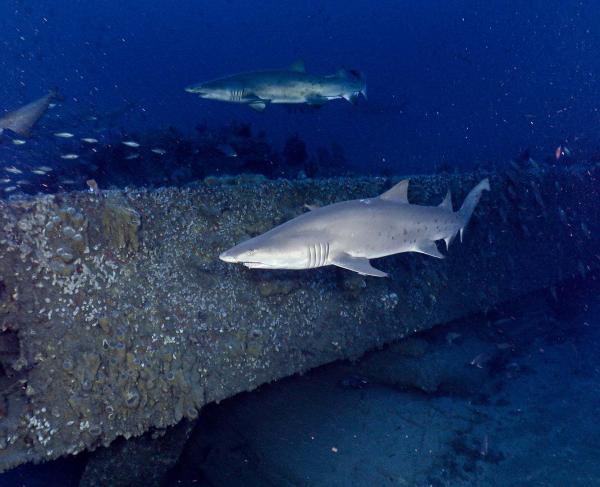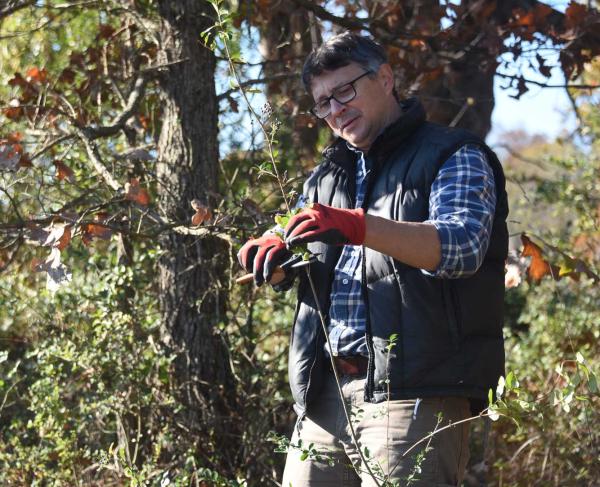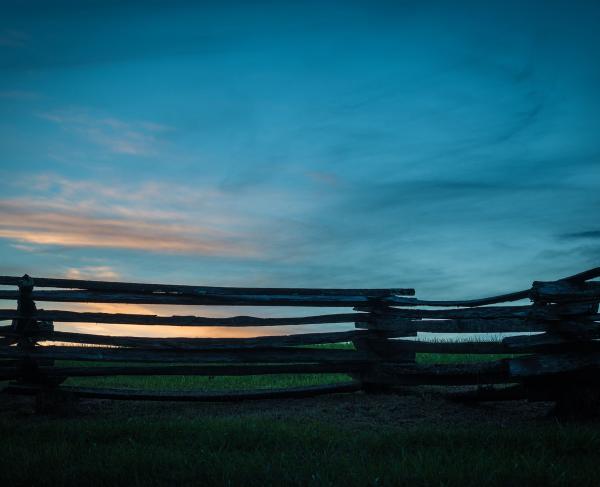Starting a National Movement From Scratch
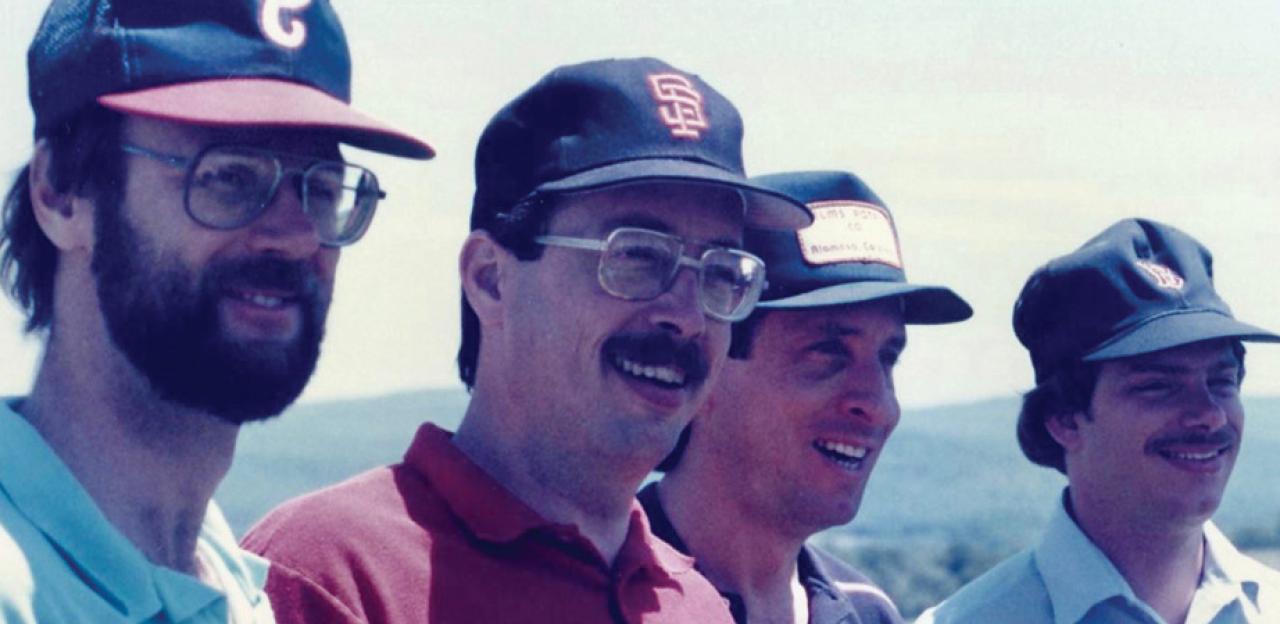
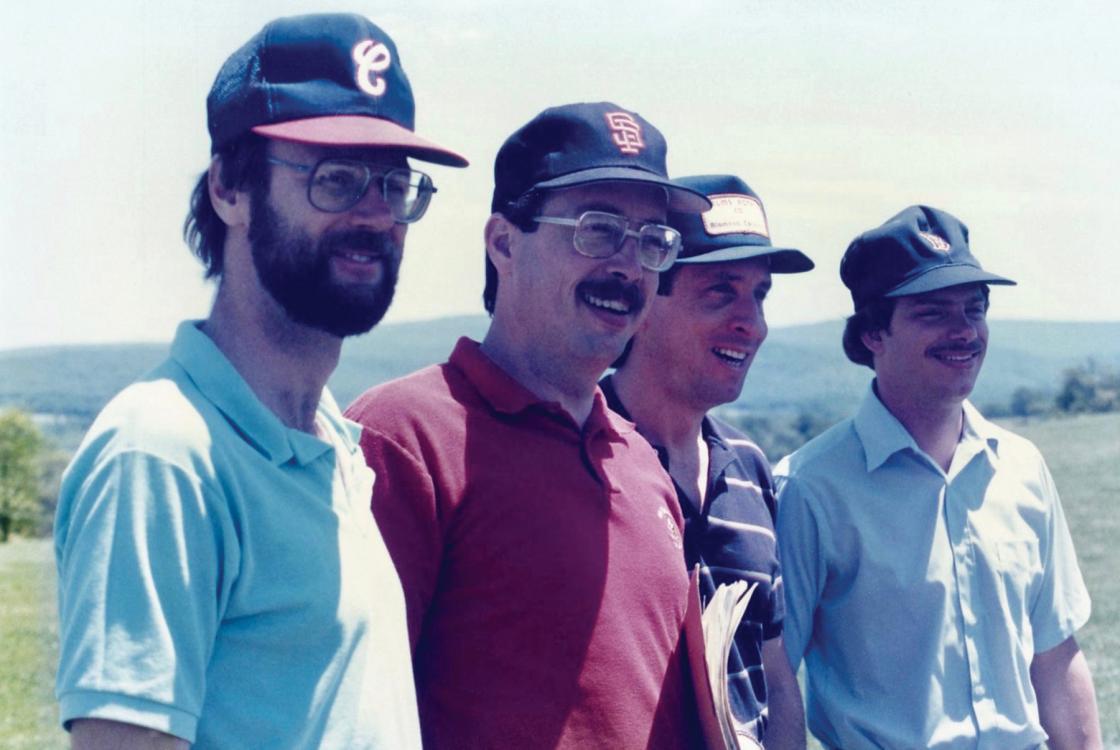
Thirty years ago, on July 18, 1987, a group of Civil War historians and enthusiasts convened a meeting at Arbuckle’s Restaurant on the Rappahannock River in Fredericksburg, Va., and founded the Association for the Preservation of Civil War Sites (APCWS) — the first national organization devoted to acquiring and preserving battlefield land.
Two of the founding directors were Dr. Gary W. Gallagher, noted Civil War author and scholar, who became the first president of APCWS, and Robert K. Krick, then chief historian of the Fredericksburg and Spotsylvania National Military Park, who was APCWS’s first vice president.
In this feature, Gallagher and Krick recall creating APCWS as well as the organization’s earliest days. These excerpts were extracted from oral history interviews that the Civil War Trust conducted with Gallagher and Krick, as well as remarks that Gallagher made in a 2012 presentation about the founding of the preservation movement.
Gary Gallagher
The destruction of the Chantilly battlefield was a wake-up call for those of us who were interested in the late 1980s in the preservation of Civil War battlefields. Chantilly was responsible for the APCWS and by extension was responsible for the national focus on the need to preserve historic ground.
Back then, no one envisioned that many thousands and thousands of acres would be saved and that millions of dollars would be raised on the scale that has come about. That was absolutely beyond what anyone would have imagined back then.
But, in early 1987, a handful of us got together. I remember conversations with [former National Park Service historians] Bob Krick and Will Greene. I already knew Bob Krick, because he had helped me as a very young historian when I came east to do research on Stephen Dodson Ramseur, which was my first book. I kept in touch with Bob, and we had worked on some little projects together. Bob is really the one who taught me how to give a battlefield tour. Will Greene and Bob and I spent untold hours tramping across battlefields to put a number of programs together.
Robert K. Krick
Donald [Pfanz, former National Park Service historian] and I and Gary Gallagher did most of the initial kickoff on this. Donald doesn’t get as much credit as he deserves because he didn’t play a role thereafter. He and I and Gary Gallagher did most of the kicking around. And there was an absolute feeling — which I still think probably was warranted although we got away with it — that this should not be run by park service people, should not be dominated by park service people because of the appearance of being an outshoot of the National Park Service, and that it also would get those people in trouble. Park service people are not supposed to do this kind of politicking.
So, when we first formed, we desperately needed to establish a slate of officers. The notion was that — since this was based in Fredericksburg, and I was and am the Fredericksburg dude — I ought to be president. And I said, “Absolutely not. I ought not to be an officer at all.” So Gary Gallagher from academe agreed to accept the mantle as president if I’d be the vice president and do the kind of day-to-day executive stuff. There were no other NPS people as officers, nor generally did they make up more than one or two of the board. We purposely kept that profile low.
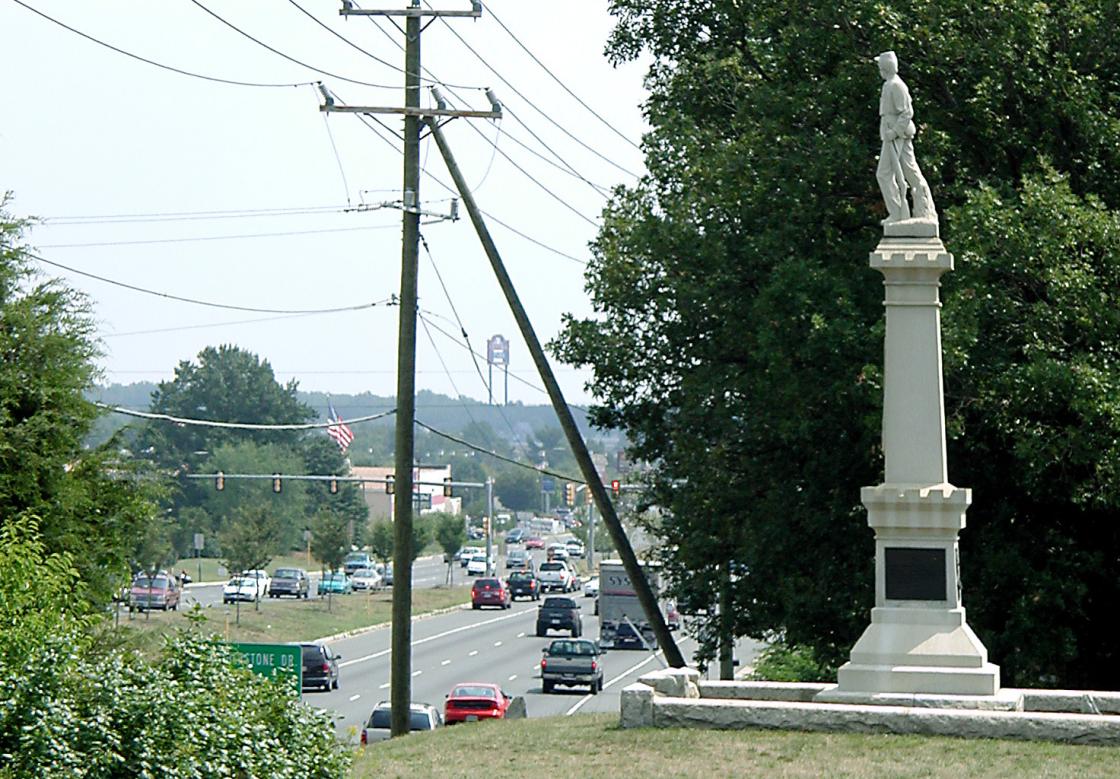
Gallagher
I was very aware of what happened at Fredericksburg, because I went there in 1965 when I was 14. It was the first time I got to come east. I grew up on a farm in southern Colorado. And in 12 days, my mother, grandmother and I drove from Colorado all the way to Gettysburg and back. We went to Fredericksburg when Route 3 was a two-lane road and Salem Church was completely out of town. It was even before that very first gas station went up right across from Salem Church. So I had that in mind. I had pictures of all that. And coming back 15 years later in 1981, I could see how different it was. Route 3 just sort of defines what can happen to historic ground – the most hideous kind of development.
But I remember meeting in Will Greene’s living room, and then we had our first larger group meeting at Arbuckle’s Restaurant in Fredericksburg. Of course, Bob took over. Because that’s what Bob does. That is Bob’s natural personality, and he cared passionately about preservation. I saw the loss of historic ground, but those park service guys lived it every day. I mean, they watched, literally every day, as there would be more encroachment here and there.
It made sense for me to be president of APCWS because I had a foot in different worlds in a way that the park service people did not. And besides, they were working for the United States government, and that could have bothered some people. I had scholarly credentials – academic credentials – but also had been dealing with the public in a number of ways and with park service people. So I could check more boxes than anybody else who was with us initially.
I was ready to take it on. And we did really take it on. Bob did more than I did. And Will Greene did more than I did. And Merle Sumner [APCWS treasurer] did a lot. I mean, we all did a lot … we wrote a lot of letters. We did all kinds of things. We were unpaid, of course, in any way.
Krick
In the very earliest days, the organizational days, Donald was worried by things happening all over the country, as were we all. And my position was that we could not, as a nascent organization, deal with anything sort of beyond our long rifle shot. Not to say that I was provincial, but I thought we should be provincial. Not just for Fredericksburg, but probably just for Virginia. There were terrible problems at Chickamauga and Franklin. But we weren’t even crawling yet, not to say walking or running or racing. And we just had to stay within what we could reach. And we did that for quite a while.
We didn’t know what the hell we were doing and we weren’t doing a great deal. But it was pretty much up to me. Because Gary at that point was still at Penn State and didn’t have the time or geographical proximity to do it. So I kind of did things locally. And he was president, I think, for eight years and me vice president for maybe seven. And we just stumbled along for starters.
The Coaling at Port Republic was our first acquisition, but it was not all that much of a coup, really, because it belonged already to the Lee-Jackson Education Foundation, on whose board I and Jack Ackerly served. We really didn’t save that; we just kind of took it over. That was more of a lapel ornament. We needed to do something more.
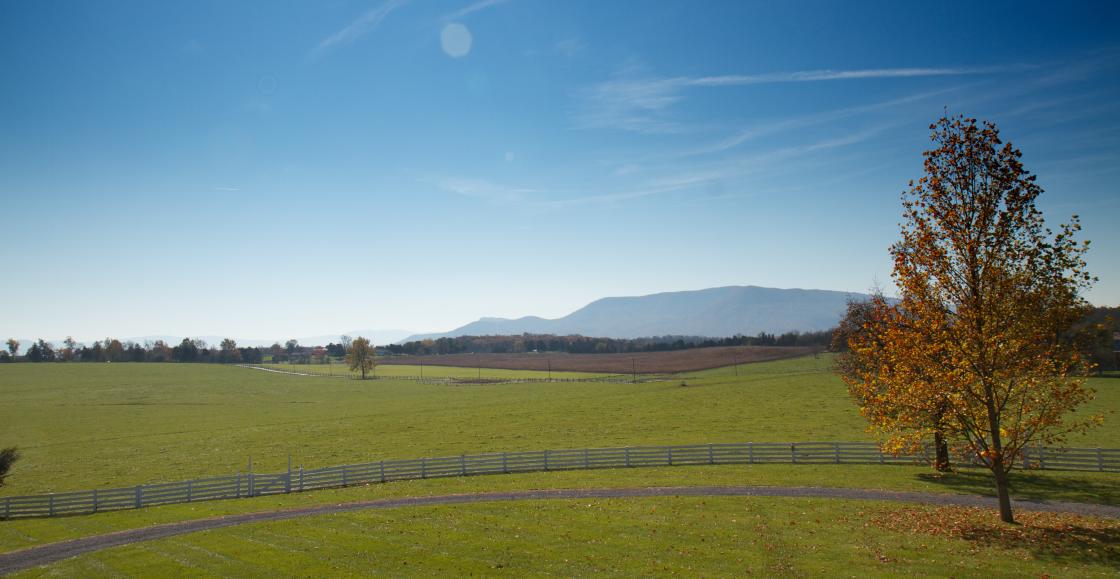
Gallagher
In the beginning, I envisioned APCWS, and I think most people did, as an Eastern Theater-centered group. SHAF [Save Historic Antietam Foundation] already existed. We thought APCWS would do that kind of work, but on a broader scale, and with a national constituency, if possible. We were interested in not just one battlefield, but Eastern Theater battlefields, focusing on pieces of ground that lay outside National Park Service protection and outside the legislative boundaries of National Park Service sites. This was ground the park service was not going to be able to protect – at battlefields such as Brandy Station, Cedar Creek, Cedar Mountain, Five Forks, Reams Station, Kernstown, Cross Keys, South Mountain, Fisher’s Hill, Third Winchester, Port Republic and North Anna. All of those places now have been saved to a greater or lesser degree. You can check off every one that I mentioned. At the time, none of them had been saved and they were vulnerable. We hoped that if we were successful enough in Virginia, Maryland and Pennsylvania, that eventually we would also work at Western Theater sites.
We didn’t have a penny, so we weren’t going to be buying anything anytime soon. Nobody in our initial group had any money. We didn’t have any wealthy people. We didn’t even have the money to get our first little flyer made, or the initial stationary printed. Some of our members came forward and wrote the kinds of checks that let us get going. But I think we initially thought that there might be some purchases in fee and some easements might be possible. I don’t know that we actually thought it out that carefully. It was just that we believed something needed to be done.
The first person who came forward to make a substantial offer was [New York financier] Dick Gilder. He had met Will, and Dick offered us a $50,000 matching grant. He never offered to just give us money. He always offered to give us matching grants. He offered a $50,000 matching grant and I think we raised $63,000 for that. We ended up with more money than we had imagined.
We decided early on that the absolute highest percentage of money would go to purchases. We wanted to be able to tell people who gave us money that virtually every penny would go to buying land. We would try to use the matching grant money for administrative costs.
So we started raising money. Our membership went up to 500, I think, within about a year or so, and we had some money in the bank. Then we started looking for land. It wasn’t as easy as some of us might have thought at the beginning to find something that you could purchase. It was hard to find appropriate pieces of ground early on.
Bob Mrazek [former U.S. congressman from New York] came onto the board. Bob [Krick] and I did more of the political stuff than anyone else. Bob Torricelli [former U.S. senator from New Jersey] was a huge help to us for years, and Bob and I did a number of tours for him and his New Jersey posse.
I was president for seven years, from 1987 to 1994. Bob was vice president, and Merle Sumner was treasurer. Brian Pohanka was secretary for the first number of years. Will became the executive director. He quit the park service and became the person who really looked after the organization. Then we got a little office in Fredericksburg on a shoestring. That took some of the pressure off. Will started doing a lot of the things that Bob and I had been doing, kind of with our left hands, while we were pursuing our regular jobs. Will is very focused and was very good at that.
Military artist Don Troiani helped us in a number of ways early on. Author Alan Nolan, who was a senior partner in Indiana’s largest law firm, joined the board. We brought Carrington Williams on board, who was a lawyer of immense experience and had been in the middle of creating Dulles Airport. Historian Jim McPherson also came onto our board. So we had the number-one Civil War historian in the country, who always spoke for APCWS and donated money from touring fees and so forth. The quality of the board and the visibility of the organization went up, but we still didn’t have big-money people. That didn’t happen until later in the 90s, when Paul Bryant, Jr., and other people came on board. I was effectively gone by then.
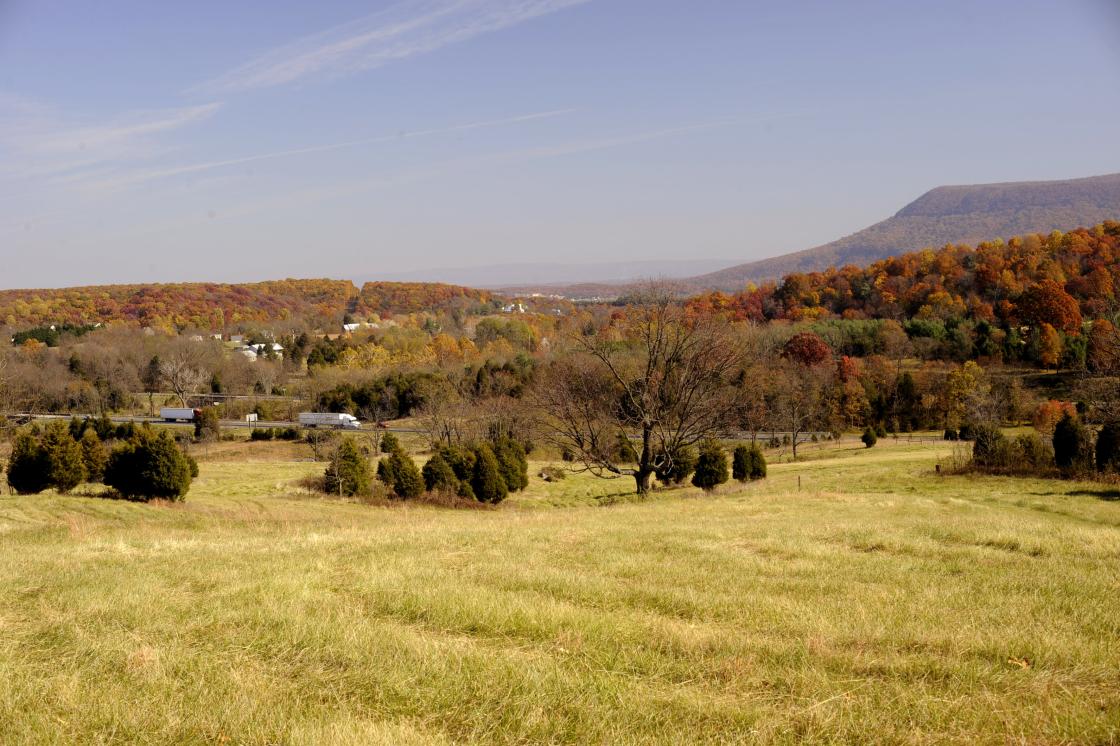
Our first real success came at Fisher’s Hill. We bought about 130 acres at Fisher’s Hill. That’s the first really significant piece of ground we bought. I mean, that was a real piece of ground on a real battlefield in the heart of the battlefield. That was exciting. And as it turned out, we could pull it off. That’s the one I felt best about, until at the very end of my time when we got the huge piece of ground – huge – at Malvern Hill. I mean, that was as good a piece of ground as I think would have been available anywhere – that absolutely spectacular piece of ground that looks down the gentle slope toward where the principal Confederate assaults advanced. That was a big success for APCWS and, without question, pointed the way toward where we are now in preservation. I think APCWS blazed the trail there, and now what we have is stunning.
I still love it every time I drive past Fisher’s Hill on [Interstate] 81 and look at the cut on Little North Mountain where the power lines go through – that tells you exactly where the Confederate line was. Every time I drive past there I think about the work we did to get that ground. I get a lot of satisfaction from that.
When I left, life had become much more complicated for me because I was head of the History Department at Penn State, which just upped my level of responsibility. And then the Department of Religious Studies was put under me, and then the Department of Classics as well. I had responsibility for — including historians at a number of Commonwealth campuses of Penn State — nearly 100 faculty. I just didn’t have the time to do as much with APCWS. And it had become something that didn’t really need me anymore, I thought. It had moved beyond the stage where it needed any one of us individually. It did become a real national organization with real fundraising. I was already just pulled in so many directions that I couldn’t devote as much time to it.
I was an outsider watching it, but the merger between the APCWS and the original Civil War Trust made sense, especially because I think that the new organization basically had the philosophy of the APCWS more than that of the original Civil War Trust. They were relentless about finding land and buying it. That’s all they cared about. And that’s all APCWS cared about. That suited me. When I stepped down, we had 11,000 or 12,000 members. That’s a long way from 27 in a restaurant in Fredericksburg. But it speaks to the number of people who feel a connection to battlefields.
Bob Krick and I talked about this early history of the APCWS. We just picked each other’s brains about 1987, and we both felt very old. But looking back from this very long perspective, I think one of the best things I’ve ever done was that early work with APCWS. Just going to these sites, you can see the tangible dividends of this pro bono work that a number of us who all had actual jobs then did with our left hands.
I have very fond memories of APCWS and am happy that it’s turned into the Civil War Trust. I think Jim Lighthizer has been a sort of magician in getting money and saving land. I’m very high on it, as I’m sure you can tell. The success today is something we absolutely did not envision.
